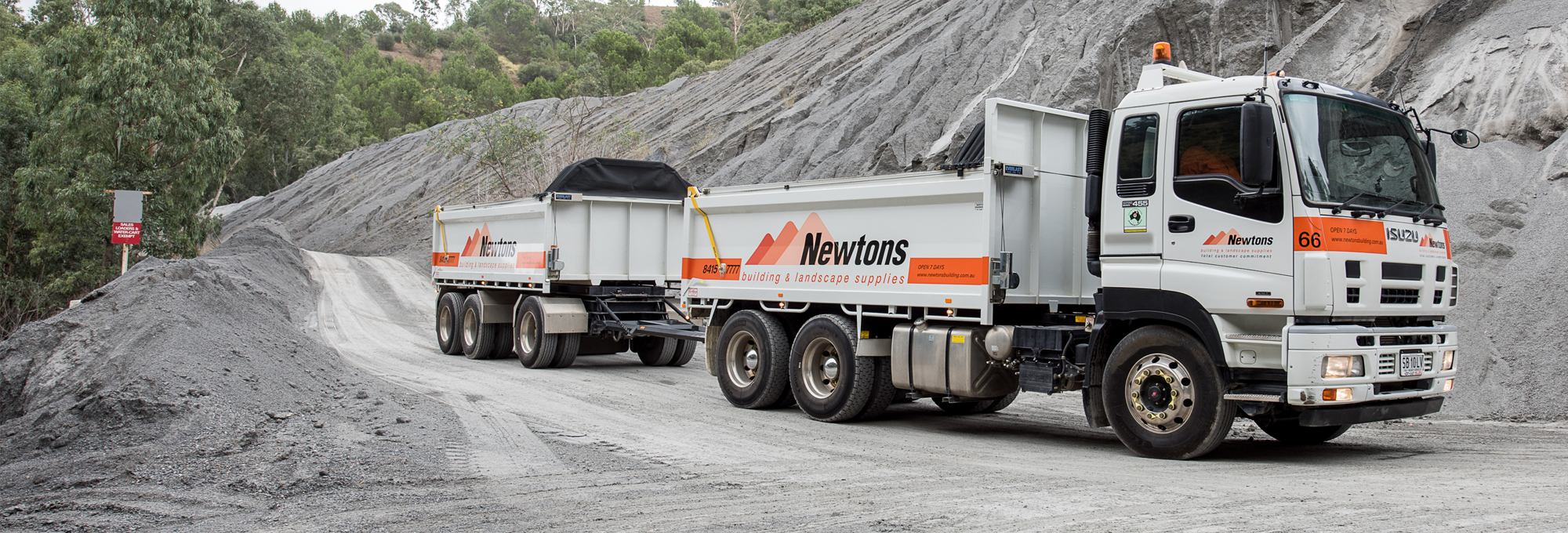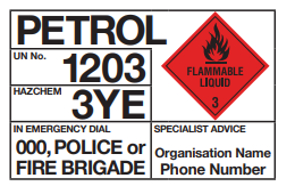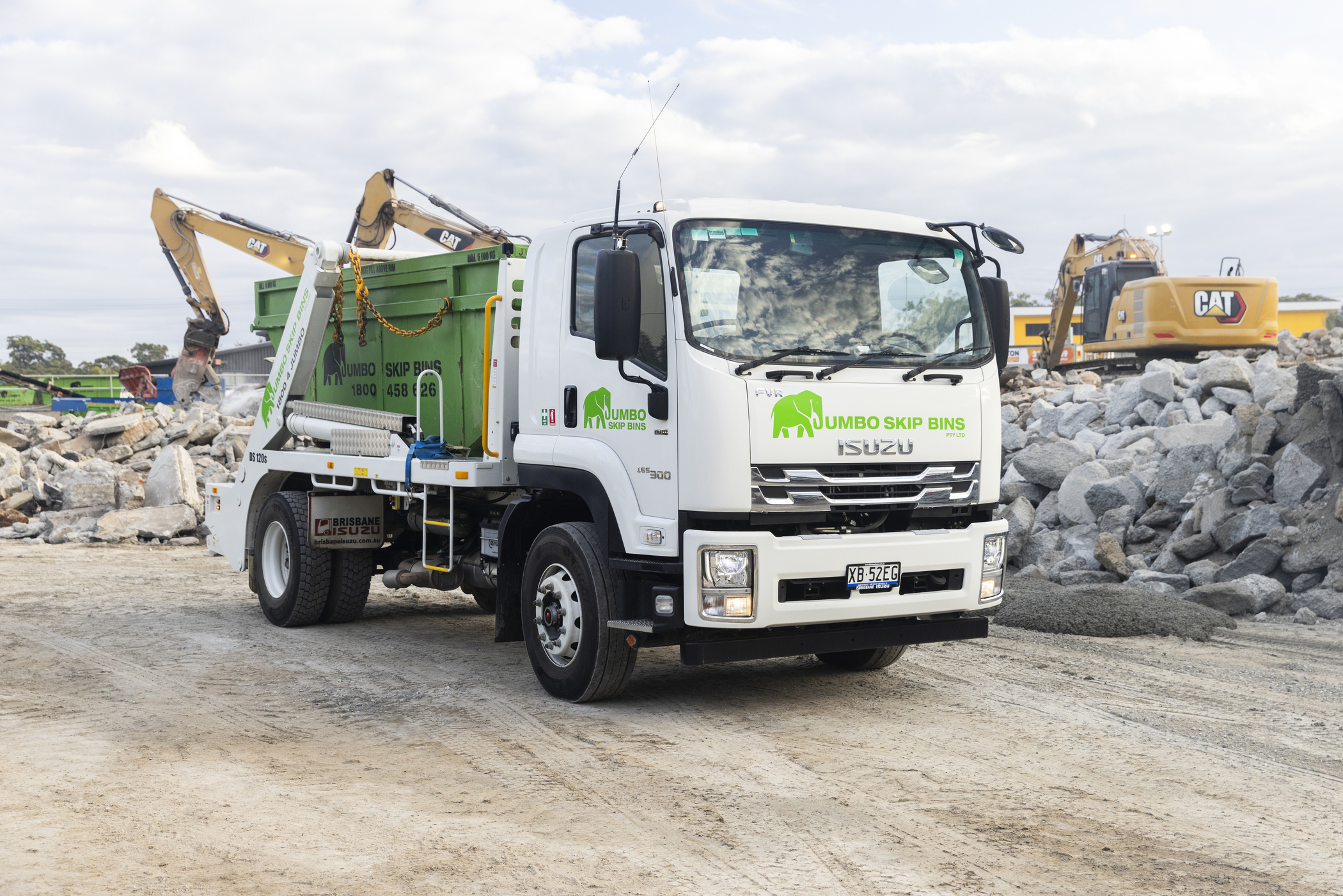THE DEVIL’S IN THE DETAIL: TRANSPORTING DANGEROUS CARGO

 What is dangerous cargo?
Dangerous cargo includes any goods that could potentially be a risk to health, safety, property or the environment. This can be anything from explosives and chemicals, down to everyday items like aerosol cans. The Globally Harmonised System of Classification and Labelling of Chemicals (GHS), divides dangerous materials into nine primary classes, with each classification detailing various physical, health and environmental hazards.
These classes are identifiable by pictograms such as flames for flammable liquids, solids and gases, and the skull and crossbones for fatal or toxic substances. You can see the full list of primary classes and the classification system on the Safe Work Australia website.
What is dangerous cargo?
Dangerous cargo includes any goods that could potentially be a risk to health, safety, property or the environment. This can be anything from explosives and chemicals, down to everyday items like aerosol cans. The Globally Harmonised System of Classification and Labelling of Chemicals (GHS), divides dangerous materials into nine primary classes, with each classification detailing various physical, health and environmental hazards.
These classes are identifiable by pictograms such as flames for flammable liquids, solids and gases, and the skull and crossbones for fatal or toxic substances. You can see the full list of primary classes and the classification system on the Safe Work Australia website.
 The Australian Code of Dangerous Goods
The Australian Code for Transport of Dangerous Goods by Road & Rail (ADG Code) breaks down the acknowledged international standard further, into the well-known Australia-wide system of signs and labels you’ve likely seen on the back of trucks and hazardous items.
The Australian Code of Dangerous Goods
The Australian Code for Transport of Dangerous Goods by Road & Rail (ADG Code) breaks down the acknowledged international standard further, into the well-known Australia-wide system of signs and labels you’ve likely seen on the back of trucks and hazardous items.
 Dangerous cargo – for carriers
The first step of transporting dangerous cargo is to determine, with the help of the ADG Code Part 2, what classification of dangerous cargo your item is. Each class has different restrictions and requirements for transportation, including the way the goods are restrained, and with what relevant documentation, safety equipment and signs you’re required to carry on board.
Labelling of goods with appropriate signage and HAZCHEM Emergency Action placards (ADG Code Part 5) is especially important, as it allows other drivers and emergency services to quickly evaluate the severity and handling of any incident involving your dangerous goods.
Dangerous cargo – for carriers
The first step of transporting dangerous cargo is to determine, with the help of the ADG Code Part 2, what classification of dangerous cargo your item is. Each class has different restrictions and requirements for transportation, including the way the goods are restrained, and with what relevant documentation, safety equipment and signs you’re required to carry on board.
Labelling of goods with appropriate signage and HAZCHEM Emergency Action placards (ADG Code Part 5) is especially important, as it allows other drivers and emergency services to quickly evaluate the severity and handling of any incident involving your dangerous goods.
 Different laws for different areas
Each Australian state and territory has different laws and requirements, but most follow along the same lines, requiring drivers to hold a state-issued dangerous goods driver’s licence if you’re carrying more than 500 kg or litres of dangerous goods.
Depending on the state or territory, there may also be travelling restrictions in place, including no-go transport zones—these often include the main CBD of a city and tunnels with heavy commuter traffic.
Exceptions
On the lighter end of the scale, people carrying less than 500 kilograms or litres of dangerous goods as tools of a trade, must only make sure their load is secured and segregated—with the exception of toxic or flammable gas.
If you’re transporting in bulk, or even if you’ve just loaded the truck for a day’s plumbing work, it’s essential to understand how much and what type of dangerous goods you are carrying… both for your own safety and the wellbeing of others on the road.
Safe driving and maintenance
Regardless of whether you’re driving a B-Double or a light truck, the legal responsibility increases dramatically whenever you’re carrying dangerous goods.
Safe driving at a safe speed for your load is paramount, and regular vehicle maintenance such as frequent servicing and repairs is an important step in making sure your truck will perform as expected, every time.
Drivers should also prepare to get a good night’s sleep and take regular rest breaks when transporting dangerous goods—you can have a look at our blog on managing driver fatigue here.
Sometimes, though even the perfect circumstances cannot stop an incident from occurring.
What to do if an incident occurs
If an incident occurs that results in material spillage, anyone in the vicinity should immediately vacate the area to remove the risk of harm. Emergency services should be called immediately at 000.
Safety equipment on board may be useful, such as warning devices to alert traffic in cases of emergency, however other equipment like fire extinguishers should only be used if it’s safe to do so, and this will be entirely dependent on the nature of the dangerous cargo.
Different laws for different areas
Each Australian state and territory has different laws and requirements, but most follow along the same lines, requiring drivers to hold a state-issued dangerous goods driver’s licence if you’re carrying more than 500 kg or litres of dangerous goods.
Depending on the state or territory, there may also be travelling restrictions in place, including no-go transport zones—these often include the main CBD of a city and tunnels with heavy commuter traffic.
Exceptions
On the lighter end of the scale, people carrying less than 500 kilograms or litres of dangerous goods as tools of a trade, must only make sure their load is secured and segregated—with the exception of toxic or flammable gas.
If you’re transporting in bulk, or even if you’ve just loaded the truck for a day’s plumbing work, it’s essential to understand how much and what type of dangerous goods you are carrying… both for your own safety and the wellbeing of others on the road.
Safe driving and maintenance
Regardless of whether you’re driving a B-Double or a light truck, the legal responsibility increases dramatically whenever you’re carrying dangerous goods.
Safe driving at a safe speed for your load is paramount, and regular vehicle maintenance such as frequent servicing and repairs is an important step in making sure your truck will perform as expected, every time.
Drivers should also prepare to get a good night’s sleep and take regular rest breaks when transporting dangerous goods—you can have a look at our blog on managing driver fatigue here.
Sometimes, though even the perfect circumstances cannot stop an incident from occurring.
What to do if an incident occurs
If an incident occurs that results in material spillage, anyone in the vicinity should immediately vacate the area to remove the risk of harm. Emergency services should be called immediately at 000.
Safety equipment on board may be useful, such as warning devices to alert traffic in cases of emergency, however other equipment like fire extinguishers should only be used if it’s safe to do so, and this will be entirely dependent on the nature of the dangerous cargo.
 Penalties for unsafe transportation
Penalties for not following requirements or restrictions on transporting dangerous goods are dictated by each individual state or territory, but generally, negligent transportation can result in hefty fines or even imprisonment.
Under the existing Chain of Responsibility regulations, every person involved in transporting dangerous goods is responsible for ensuring it is done responsibly, and legally. This includes everyone from the driver and manager, down to the picker, packer and loader of the goods.
Additionally, failure to comply with the Dangerous Goods Act in each state or territory can result in a $290,000 fine and up to five years imprisonment for individuals, with fines rising into the millions for companies and body corporates who do the same.
The Victorian government recently introduced stronger penalties for operators who flout the Dangerous Goods Act, including the addition of ‘reckless conduct’ offences that carry up to a 10 year prison sentence, if actions are found to place a person in danger of death.
Penalties for unsafe transportation
Penalties for not following requirements or restrictions on transporting dangerous goods are dictated by each individual state or territory, but generally, negligent transportation can result in hefty fines or even imprisonment.
Under the existing Chain of Responsibility regulations, every person involved in transporting dangerous goods is responsible for ensuring it is done responsibly, and legally. This includes everyone from the driver and manager, down to the picker, packer and loader of the goods.
Additionally, failure to comply with the Dangerous Goods Act in each state or territory can result in a $290,000 fine and up to five years imprisonment for individuals, with fines rising into the millions for companies and body corporates who do the same.
The Victorian government recently introduced stronger penalties for operators who flout the Dangerous Goods Act, including the addition of ‘reckless conduct’ offences that carry up to a 10 year prison sentence, if actions are found to place a person in danger of death.
 Better safe than sorry
Safe transport is always important, but it is critical for those carrying dangerous goods in their load to follow the government guidelines and the relevant rules and regulations for their state or territory—keeping in mind those specific Chain of Responsibility laws that may apply.
Regulations are strict, and for good purpose. They help to avoid potentially catastrophic incidents, such as this tanker truck that rolled and caught alight in Queensland while carrying a cargo of molasses.
But even small incidents, such as a plumber spilling drain clearing product, can have a disastrous effect on the environment and wildlife, and dramatically affect the business involved. Therefore, no matter how big or small the truck or cargo, we all have a part to play in ensuring dangerous goods are transported in a safe and legal way.
Do you know what to do if you break down on the side of the road? Here are our tips for what to do in that stressful situation.
Better safe than sorry
Safe transport is always important, but it is critical for those carrying dangerous goods in their load to follow the government guidelines and the relevant rules and regulations for their state or territory—keeping in mind those specific Chain of Responsibility laws that may apply.
Regulations are strict, and for good purpose. They help to avoid potentially catastrophic incidents, such as this tanker truck that rolled and caught alight in Queensland while carrying a cargo of molasses.
But even small incidents, such as a plumber spilling drain clearing product, can have a disastrous effect on the environment and wildlife, and dramatically affect the business involved. Therefore, no matter how big or small the truck or cargo, we all have a part to play in ensuring dangerous goods are transported in a safe and legal way.
Do you know what to do if you break down on the side of the road? Here are our tips for what to do in that stressful situation.



Playtime’s over, get $3,500* to spend on extras.
If you’re ready to get serious about tackling bigger jobs, grab yourself an NLR 45-150 AMT SWB Traypack from the Ready-to-Work range for $62,990 drive away*. And to prove we aren’t playing, buy any NLR Traypack before June 30 and you’ll get $3,500* to spend on genuine accessories or an Essentials service agreement.
Learn more



